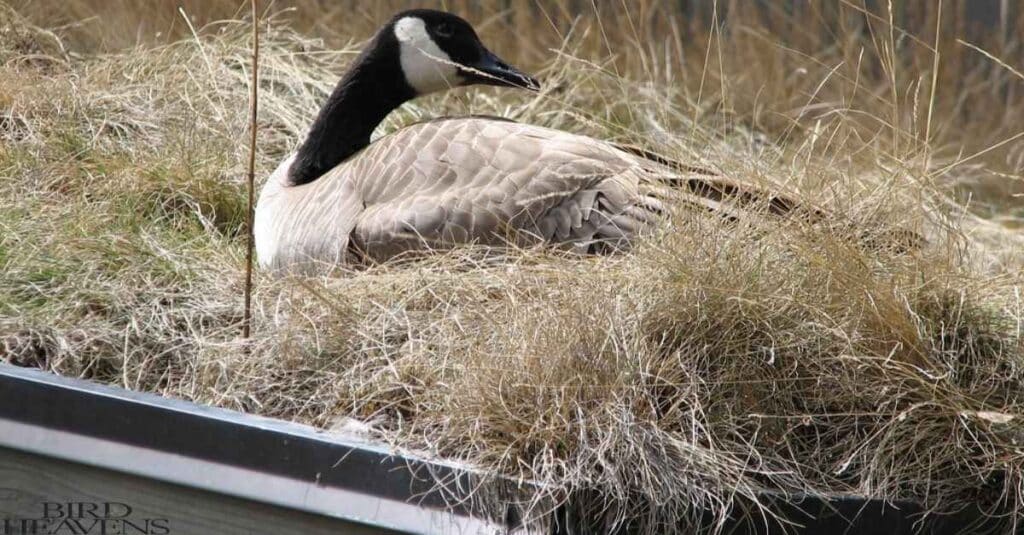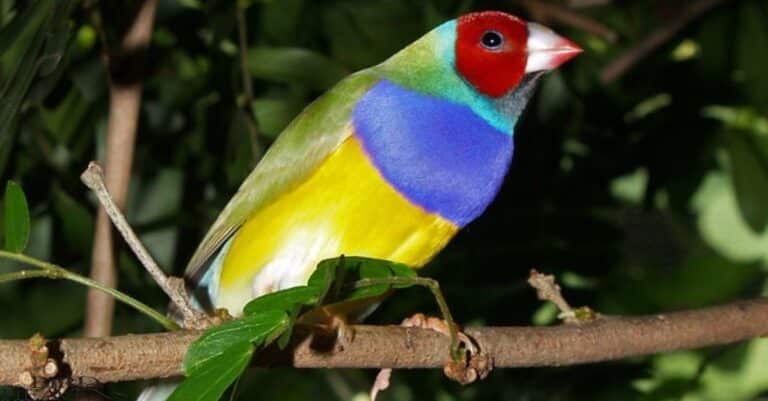When Do Geese Lay Eggs? A Complete Guide
Geese typically lay eggs in spring, from March to May in the Northern Hemisphere. The exact timing varies by species, location, and climate. Most wild geese lay one clutch annually, while domestic geese may lay for several months.
Factors like daylight hours and temperature influence egg-laying. Clutch sizes range from 2-9 eggs, laid every 1-2 days. Incubation lasts about 28-30 days.
When Do Geese Lay Eggs?
Geese, those majestic waterfowl that grace our parks, lakes, and fields, have a fascinating reproductive cycle. Whether you’re a bird enthusiast, a farmer, or simply curious about nature’s wonders.
Understanding when geese lay eggs and the intricacies of their breeding process can be both enlightening and practical.
Quick facts about geese:
- There are over 20 species of geese worldwide
- Geese are monogamous and often mate for life
- Most geese are herbivores, feeding primarily on grass and aquatic plants
- Some goose species can live up to 25 years in the wild
Breeding Season of Goose :
The breeding season for geese is a time of renewal and new beginnings. But when do geese lay eggs exactly? The answer isn’t as simple as circling a date on the calendar.

Typical Egg-Laying Months
In general, most geese species lay eggs in the spring, typically between March and May in the Northern Hemisphere. However, the exact timing can vary based on several factors.
Factors Influencing Breeding Season
- Climate and daylight hours: Geese are sensitive to changes in daylight length, which triggers their hormonal cycles. As days grow longer in spring, geese begin preparing for breeding.
- Geographic location: Geese in warmer climates may start laying eggs earlier than those in colder regions. For instance, Canada Geese in Florida might lay eggs as early as January, while those in Alaska may wait until May.
- Species differences: Different goose species have slightly varying breeding schedules. Here’s a comparison of egg-laying times for some common goose species:
| Goose Species | Typical Egg-Laying Period |
| Canada Goose | March to May |
| Greylag Goose | March to April |
| Snow Goose | Late May to early June |
| Barnacle Goose | May to June |
Case Study:
Canada Geese in New York City Parks In a study conducted by the New York City Department of Parks and Recreation, researchers found that Canada Geese in urban parks began nesting in early March, with peak egg-laying occurring in mid-April.
This urban population showed a slightly earlier breeding cycle compared to their rural counterparts, possibly due to milder urban temperatures and abundant food sources.
The Egg-Laying Process Of Goose to Nest :
Once the breeding season begins, geese engage in a series of behaviors leading up to egg-laying. Understanding this process gives us insight into the remarkable journey of goose eggs from formation to hatching.

Nesting Behavior
Before laying eggs, geese engage in nest-building activities. The female, also called a goose, typically chooses the nesting site, while the male (gander) stands guard nearby. Nesting sites are usually close to water and offer some protection from predators.
Egg Formation Inside the Goose
The egg-laying process begins inside the female goose’s body. Here’s a simplified timeline of egg formation:
- Ovulation occurs (release of yolk from ovary)
- Yolk travels through the oviduct, where it’s fertilized and albumen (egg white) is added
- Shell membranes and the hard outer shell form
- The entire process takes about 24 hours per egg
Laying Frequency and Clutch Size
Geese typically lay one egg every 1-2 days until their clutch is complete. A clutch is the total number of eggs laid in one nesting attempt. Clutch sizes vary by species, but here are some common ranges:
- Canada Goose: 2-9 eggs (average 5)
- Greylag Goose: 4-6 eggs
- Snow Goose: 2-6 eggs
- Barnacle Goose: 3-5 eggs
The rhythmic nature of egg-laying in geese is a testament to the precision of their biological clocks-notes Dr. Jane Goodall
Goose Nests For Eggs :
The nest is crucial for the survival of goose eggs. It provides protection, insulation, and the perfect environment for incubation.

Nest Location Preferences
Geese prefer to nest in areas that offer:
- Proximity to water (usually within 150 feet)
- Good visibility of surroundings
- Some cover from predators
- Slightly elevated ground to avoid flooding
Materials Used in Nest Construction
Goose nests are typically made of:
- Grasses and reeds
- Small twigs and leaves
- Down feathers plucked from the female’s breast
How to Spot a Goose Nest & and Why You Shouldn’t Disturb It?
Goose nests often appear as shallow depressions lined with vegetation and down. They can be found on the ground near water bodies, on small islands, or even on floating vegetation.
Important: It’s crucial not to disturb nesting geese. In many countries, including the United States, it’s illegal to interfere with migratory bird nests. Disturbance can cause stress to the birds and may lead to nest abandonment.
Egg-Laying Variations According To Goose Species :
While we’ve covered general patterns, it’s important to note that egg-laying behaviors can vary significantly among different goose populations.
Wild vs. Domesticated Geese
Wild geese typically have a more defined breeding season, while domesticated geese may lay eggs over a longer period:
- Wild geese: Usually lay eggs once per year in spring
- Domestic geese: Can lay eggs for several months, sometimes even year-round in controlled environments
Differences Among Goose Species
Different species of geese have evolved various reproductive strategies:
- Arctic-nesting species (like Snow Geese): Have a shorter, more intense breeding season
- Temperate species (like Canada Geese): Have a longer, more flexible breeding period
Age and Egg-Laying Capacity
A goose’s age affects its egg-laying capacity:
- Young geese (1-2 years old) may lay fewer eggs
- Prime reproductive age is typically 3-8 years old
- Older geese may lay fewer eggs or stop laying altogether
You Might Like >>Why Do Geese Honk When They Fly
Complete Process From Egg to Gosling:
Once the eggs are laid, the incubation period begins. This is a critical time for the developing embryos inside the goose eggs.
Incubation Period Duration
The incubation period varies slightly by species, but generally lasts about 28-30 days for most goose species.
| Goose Species | Average Incubation Period |
| Canada Goose | 28 days |
| Greylag Goose | 28-29 days |
| Snow Goose | 23-25 days |
| Barnacle Goose | 24-25 days |
Roles of Male and Female Geese During Incubation
Geese are known for their strong pair bonds, and both parents play a role in incubation:
- Female: Primary incubator, spends most time on the nest
- Male: Guards the nest, takes short incubation shifts when female feeds
Hatching Process
As the incubation period nears its end, the eggs begin to hatch:
- Goslings use their egg tooth to pip (crack) the shell
- Hatching can take 24-48 hours from first pip to emergence
- All eggs in a clutch typically hatch within 24 hours of each other
Challenges in the Nest: Predators and Threats
The journey from egg to gosling is fraught with dangers. Understanding these threats helps us appreciate the challenges geese face during the breeding season.

Common Egg Predators
Goose eggs and goslings face numerous predators:
- Mammals: Foxes, raccoons, skunks
- Birds: Crows, ravens, gulls, hawks
- Reptiles: Snakes (in some regions)
Environmental Risks
Natural factors can also pose a threat to nesting geese:
- Flooding
- Extreme temperatures
- Storms and high winds
How Geese Protect Their Eggs
Geese have developed several strategies to protect their eggs:
- Aggressive defense against predators
- Camouflaged nests
- Constant vigilance (one parent always on guard)
Interesting fact: Some geese species, like Snow Geese, practice “nest parasitism,” laying eggs in other geese’s nests as a way to increase their reproductive success.
You Might Like >>Do Robins Mate For Life
What is Sexual Maturity in Geese?
Understanding when geese reach sexual maturity helps us comprehend the full cycle of goose reproduction.
Age When Geese Start Laying Eggs
Most geese reach sexual maturity between 2-3 years of age, though some may start breeding as early as 1 year old.
Factors Affecting Sexual Maturity
Several factors can influence when a goose begins to lay eggs:
- Nutrition
- Environmental conditions
- Genetic factors
- Species (some mature earlier than others)
Lifespan and Egg-Laying Years
Geese can have a long reproductive life:
- Wild geese may live 10-25 years, breeding for most of their adult life
- Domestic geese can live even longer with proper care
- Egg production may decline in later years
You Might Like >>Vultures In Texas
Human Interaction: Do’s and Don’ts
As humans, we often encounter nesting geese, especially in urban and suburban areas. It’s important to know how to interact responsibly with these birds during their breeding season.

Observing Nesting Geese Responsibly
- Keep a respectful distance (at least 50 feet)
- Use binoculars for closer observation
- Never feed nesting geese or goslings
Legal Protections for Nesting Geese
In many countries, geese are protected under wildlife laws:
- In the U.S., the Migratory Bird Treaty Act protects most goose species
- It’s illegal to disturb nests, eggs, or goslings without proper permits
What to Do If You Find Abandoned Eggs
If you believe you’ve found abandoned goose eggs:
- Observe from a distance for at least 24 hours
- If truly abandoned, contact local wildlife authorities
- Never attempt to incubate or raise wild goose eggs yourself
You Might Like >> Why Do Storks Kill Their Young
Conclusion:
Stork infanticide is a harsh survival tactic in nature. When food is limited or conditions are difficult, storks may kill weaker chicks to help the stronger ones survive. This behavior changes depending on the species and environment. Studying it gives us important insights into bird life and how they adapt to challenges. It also highlights the need to protect natural habitats to ensure the survival of different species in the face of environmental pressures.
FAQs:
- Can geese lay eggs more than once a year?
While most wild geese lay eggs once per year, some species in favorable conditions may lay a second clutch if the first is lost early in the season. - How long do geese sit on their eggs?
Most goose species incubate their eggs for about 28-30 days. - What should I do if I find a goose nest in my yard?
Leave the nest undisturbed and keep pets and children away. Contact local wildlife authorities if the nest poses a significant problem. - Do male geese help with incubation?
Yes, male geese (ganders) often take short incubation shifts and always help guard the nest. - How can I tell if goose eggs are fertilized?
It’s difficult to tell without special equipment. Assume all eggs in the wild are fertilized and leave them undisturbed. - Do geese return to the same nesting site each year?
Many goose species exhibit high site fidelity, often returning to the same general area to nest year after year. - How soon after hatching do goslings leave the nest?
Goslings are precocial, meaning they’re ready to leave the nest within 24-48 hours of hatching. They can walk, swim, and feed themselves (with parental guidance) almost immediately.

Andrew Paul is a renowned ornithologist and founder of Bird Heavens. With my extensive expertise in bird behavior and habitat preservation,I will insightful content on species identification and conservation.My Future plans include interactive workshops and online courses to foster a global community of bird enthusiasts committed to conservation and appreciating avian life. Join me at Bird Heavens







